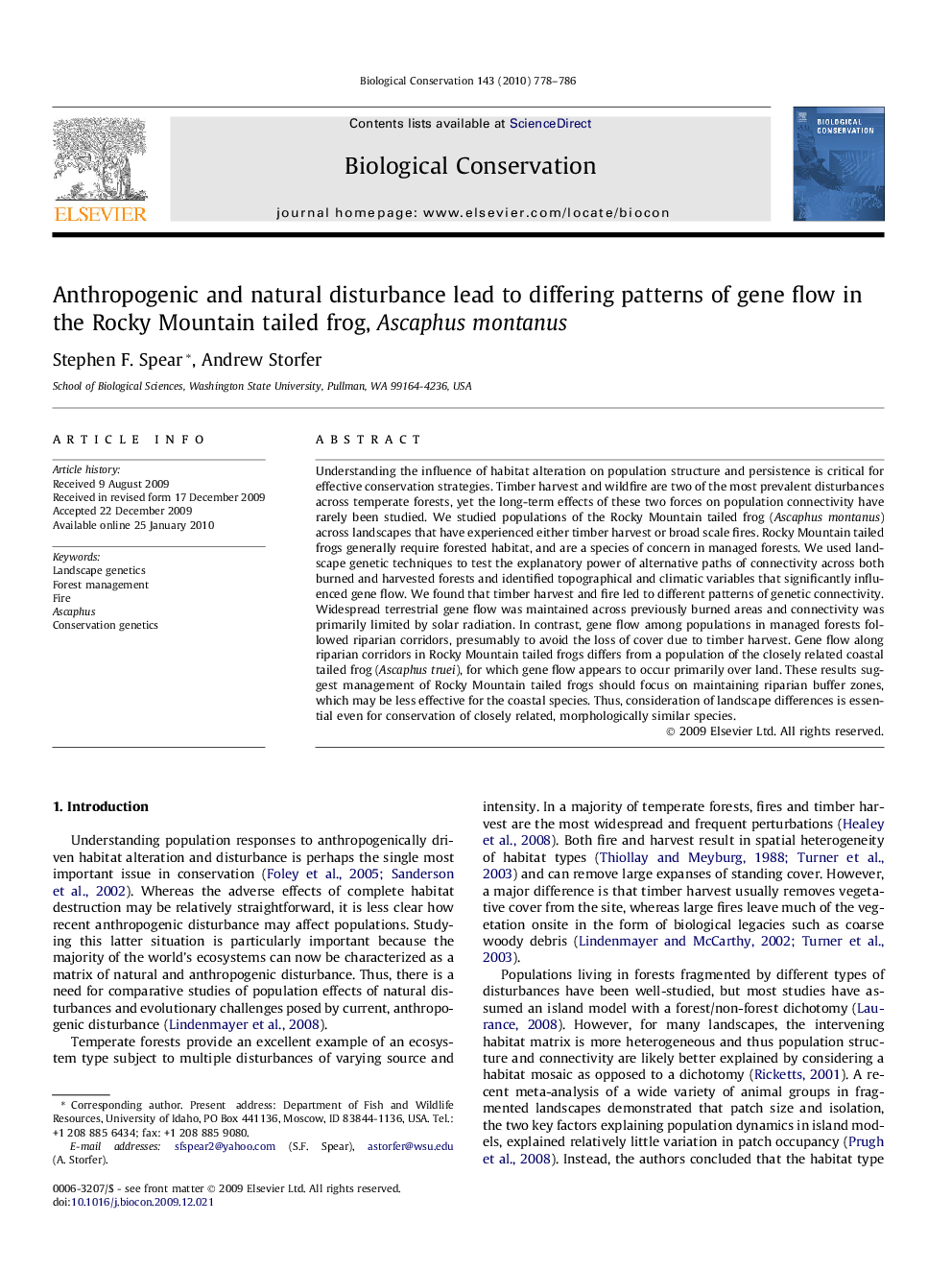| کد مقاله | کد نشریه | سال انتشار | مقاله انگلیسی | نسخه تمام متن |
|---|---|---|---|---|
| 4386127 | 1304557 | 2010 | 9 صفحه PDF | دانلود رایگان |

Understanding the influence of habitat alteration on population structure and persistence is critical for effective conservation strategies. Timber harvest and wildfire are two of the most prevalent disturbances across temperate forests, yet the long-term effects of these two forces on population connectivity have rarely been studied. We studied populations of the Rocky Mountain tailed frog (Ascaphus montanus) across landscapes that have experienced either timber harvest or broad scale fires. Rocky Mountain tailed frogs generally require forested habitat, and are a species of concern in managed forests. We used landscape genetic techniques to test the explanatory power of alternative paths of connectivity across both burned and harvested forests and identified topographical and climatic variables that significantly influenced gene flow. We found that timber harvest and fire led to different patterns of genetic connectivity. Widespread terrestrial gene flow was maintained across previously burned areas and connectivity was primarily limited by solar radiation. In contrast, gene flow among populations in managed forests followed riparian corridors, presumably to avoid the loss of cover due to timber harvest. Gene flow along riparian corridors in Rocky Mountain tailed frogs differs from a population of the closely related coastal tailed frog (Ascaphus truei), for which gene flow appears to occur primarily over land. These results suggest management of Rocky Mountain tailed frogs should focus on maintaining riparian buffer zones, which may be less effective for the coastal species. Thus, consideration of landscape differences is essential even for conservation of closely related, morphologically similar species.
Journal: Biological Conservation - Volume 143, Issue 3, March 2010, Pages 778–786